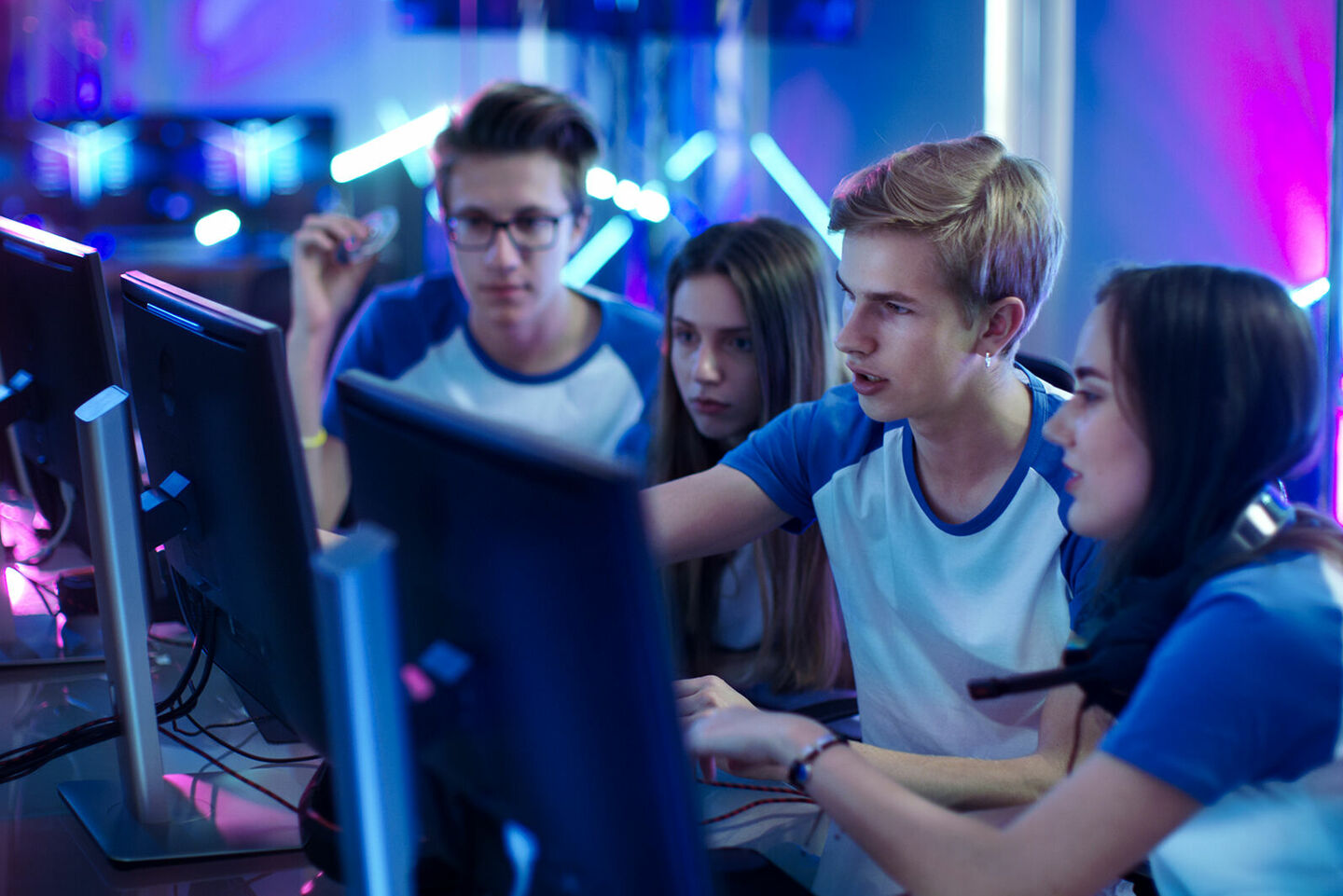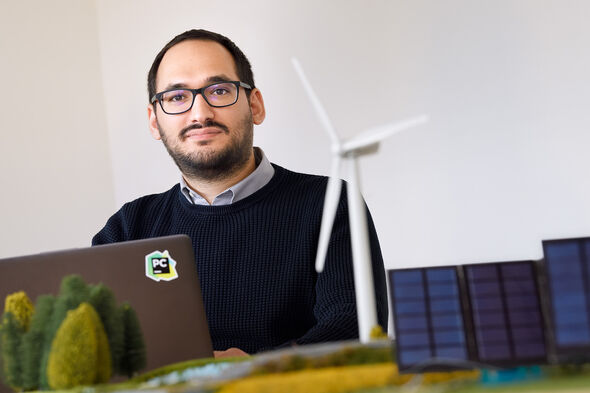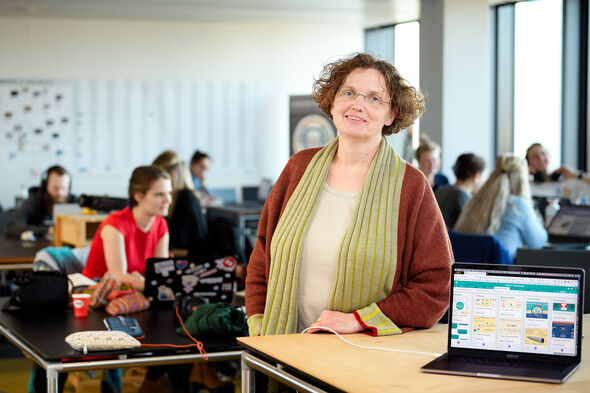
Finding your way through education playing and sharing
Teachers at TU/e can start to develop their innovative educational projects with financial support from program plan BOOST. Assistant professor Nikos Paterakis will design a competitive game that teaches his students at Electrical Engineering everything they need to know about how the electricity markets operate. Professor Caroline Hummels develops a digital learning platform at her Industrial Design department that will also allow external partners access to research projects, and that will further improve mutual sharing of knowledge.
Many parents nowadays probably think that it would be a positive thing if their son or daughter were to spend as much time gathering knowledge as they do playing computer games. Nikos Paterakis, assistant professor in the field of electricity markets and optimization of energy systems, wants to make that dream come true with his BOOST project. Over the next two years, he will develop a competitive game that needs to tell his students everything they need to know about how the electricity markets operate, which factors affect those markets, and which aspects exert an influence on them.
“My project is one of the larger ones in the series of BOOST projects,” Paterakis says. “Postdoc Juan Giraldo Chavarriaga will conduct research for it under my supervision for two years and develop the game on the basis of that research. The cost associated with this project is about 150,000 euros. It will be a so-called serious game, which means that it will be developed for other purposes than merely the gamer’s entertainment. This game is about the interaction between companies that produce electricity, and the markets on which they trade that electricity. The new markets currently emerging that allow customers to generate their own energy and supply it to the grid, will not play a role in this game for now.”
The traditional energy market, that is what Paterakis and the postdoc focus on, “those new developments will certainly become part of the game at a later stage,” Paterakis says, “but for us, too, this will be our first pilot project, so we aren’t going to make it more complex than it already is.”
Adventurous
Electrical Engineering offers regular courses which also encompass electricity markets in both the Bachelor’s and the Master’s phase. Paterakis: “I do that together with Professor Koen Kok, and I’m responsible for the Bachelor’s course. During that course, the student needs to master a great deal of theory in a short period of time in order to become familiar with the different aspects and areas of the electricity market. He or she will then be given an assignment that can only be carried out successfully when all the right steps are followed closely."
You can’t possibly describe that approach as adventurous, and it doesn’t really challenge the student, Paterakis concludes. "The game will have to change this. It will give the students the opportunity to produce energy in several different ways, and to trade that energy on the many platforms and trading floors that exist for that purpose. How much energy do they want to produce, when do they want to start trading, how much energy do they want to trade and against what price? They’re completely free to come up with their own answers to these questions.”
The ultimate goal is simple: the player who made the most profit wins the game. “The energy market is complex,” Paterakis says. “Agreements can span many years, but some decisions need to be made within a few seconds. Take energy generation from wind turbines, for example. You need to make agreements that run for a longer period for that, but you don’t know how hard the wind will blow during that period and what the revenue will be exactly. And how will the trend in energy prices develop, because the market will likely see an increase in wind energy producers. So, there is a great deal of uncertainty in that area. Or think of the attacks on oil fields in the Middle East, which have a direct influence on the price of a barrel of oil. What do you do at such a moment?” Paterakis summarizes these factors in the term ‘operational and market risks.’
European market
The market on which these developments occur, is the platform Paterakis and his postdoc will build. “The students are the participants who operate in this market in teams. The number of teams that will participate, and the number of people on these teams is flexible and depends on the size of the group. When you only have ten students, it’s unlikely that we’ll split up the group, it that case, they’ll operate as one team instead and you base your evaluation on that.”
There already are similar games in the field of energy production and energy trading, but Paterakis says that his game is different because it will include uncertainties and short-term trading. Stanford University has a similar game as well, but Paterakis says that its interface is quite outdated, and that the game is expressly aimed at the American market, which is fundamentally different than the European market. “And most of our graduates will eventually end up on that European market.”
The game has to be attractive, but in the end, we use it to teach the students the basics of the course
It is of prime importance to Paterakis that the game needs to be modern and well-designed. “It has to be attractive, but in the end, we use the game to teach the students the basics of the course. The competitive element is much stronger in other games, although our game will also provide an overview of which teams performed best, but that’s not what our game is primarily about. We want the students to perform better in this course with this game, to achieve better scores, and to become more motivated. Their performance in the game is part of the final evaluation. And of course, we will evaluate whether it will lead to the positive effects we hope for.”
The development of the game in collaboration with the postdoc will be the most time-consuming part for Paterakis, but he enjoys doing it, exactly because that’s what interests him most. “The development phase is what appeals to me as an engineer. Testing the game can be done when we teach the course with the students present, and that will not be much of an additional work load. Colleagues have shown an interest, and they certainly want to see whether they can use certain parts of the game. But they also realize that this is a major project. Those who want to set up something similar in the future can at least learn from the mistakes we will undoubtedly make over the next two years.”
A learning ecosystem for a learning community
Professor Caroline Hummels says that her BOOST project more or less grew out of the unique educational model that Industrial Design was developing in its early years, when she was program director at the department. “In that period, my colleagues and I were looking for the right tools and methods to shape education for self-directed learning. I hadn’t been active in that field for a long time as far as research is concerned, until a few years ago, when I started getting several research projects in the area of future-orientated education once again. At that point I thought to myself, I’ll just get back into it completely.”
The focus of Caroline Hummels' research at ID is the transformation of society - transformative practices, as she calls it - and the key, she believes, is that in order to bring about societal change, the socio-technological system needs to change. “And to make that possible, we need to teach people new competences. Transformation and learning are natural allies,” she says full of conviction.
That also involves new ways of learning, she continues. “My vision is based on the idea of lifelong, 24/7 learning in the context. Continuing to learn, and doing so together. This is the basis of challenge-based learning as well, the new direction in which education at TU/e is heading. Our current learning systems, however, are not in line with that principle of continuous learning. We need to have a system in which the context of learning is much broader. Partner companies, such as Philips Design in our case for example, or our partner organizations, such as the Province of Noord-Brabant, need to be able to become part of the learning system as well. These stakeholders are extremely important, but I can’t involve them in Canvas, our current learning environment. This is also the case when I want to involve students and colleagues from Fontys or the Design Academy.”
When Hummels realized that she couldn’t make any progress with Canvas, she took a different approach and developed, some years ago already, her own platform for her research project Learning on the move, which allowed external partners access to the project as well. “On that platform, my students could share activities, results and reflections of the projects they were working on. A community was formed of all the people who worked on the project, everyone had their own card with personal data. It also included options that made it simpler for the user to search for specific knowledge.”
Hummels worked on that platform for approximately a year and a half, in collaboration with colleagues and a few alumni of ID. “But building something yourself means that you’re always being overtaken by events,” she says. “Technological developments occur rapidly, and who has the time to keep up with everything? When TU/e started a pilot a few years back with Office 365 (ID employees definitively switched to this system in July of this year, ed.), I signed up for it immediately. I soon realized that my most important external stakeholders were also working with it. It doesn’t make any sense to continue building your own digital environment when Microsoft is going to develop a huge number of apps with Office 365.”
It doesn’t make any sense to continue building your own digital environment when Microsoft is going to develop a huge number of apps with Office 365
Hummels and her group have been working with Microsoft Teams, the hub within Office 365 that offers several options for collaboration, for almost a year and a half now. “I was able to start forming teams together with our external partners. We do work with a closed system, so that participating companies and institutions can be sure that everything they share within the team remains confidential.”
Doesn’t Hummels worry that the US government might gain unauthorized access to her files now that she’s working with Office 356, as was feared by TU/e and the Dutch government just a year ago? It led to a postponement of the rollout of Office 356 for TU/e employees in 2018. “No, I’m not worried about that, in part because agreements were made with Microsoft on high administrative levels in the Netherlands. I have more confidence in that than in Dropbox, or similar services, where people share all kinds of things with each other in the cloud without any control system.”
We are investigating how, with the use of technology, we can support a learning community that addresses societal challenges
The ID professor, incidentally, receives financial resources for research on innovative education from several different funding pots. “I am a Comenius Senior Fellow, and I receive money from the province to investigate how policy officers can learn from and with each other within Europe with the use of technology. All of these research projects are connected to those transformative practices I mentioned earlier. When BOOST came along, funded by the student loan resources, I signed up for it. We want to develop more tools and apps, and add these to our learning ecosystem, in order to collect, for example, more learning analytics and algorithms about learning behavior, and gain more insight that way into how people learn. This allows you to analyze what works and what doesn’t work within our education.”
Airtable
Hummels uses the spreadsheet app Airtable to better organize the entire information structure of Office 356, to optimize the findability, and to promote collaboration. “It’s a kind of LinkedIn where people decide what expertise and personal data they want to share. The major advantage is that it enables you to search for certain areas of expertise. If, for example, you want to know more about sensors, philosophy or prototyping, the system ensures that you’ll see the people who can tell you more about that. Interesting lectures, workshops and other meetings can be posted and found on Airtable as well. Both the internal and the external ones.”
It should also be able to compose a kind of agenda of the issues that are important to you, according to Hummels. “But further work on this is still needed. What’s most important about Airtable however, is the documenting, sharing and discussing of the learning process. The student and the stakeholders record all activities, deliverables and reflections in a report. Our aim is that in the future, all those traces will be automatically combined in a digital report, (almost) ready to be printed. Because you’ve already collected all the content for that during the process. But we haven’t reached that point yet.”
Hybrid system
Eventually, this new learning ecosystem should become a kind of hybrid system, according to Hummels, where people still get together, but do more and more digitally and remotely. “We are investigating how, with the use of technology, we can support a learning community that addresses societal challenges.”
In short, there is still a lot of work to be done. Hummels: “But I hear that elsewhere within TU/e people are working with similar systems for challenge-based learning. Hopefully we can combine those different areas of expertise in the future. It would be great to have a learning ecosystem that could respond to all the developments taking place outside the university much more adequately.”



Discussion